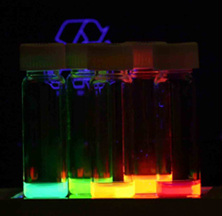Cornell and IBM Achieve Milestones in Quantum Computing Advancements

In a significant stride towards the quantum computing revolution, researchers from Cornell University, in collaboration with IBM, have announced two groundbreaking advancements that promise to address longstanding challenges in this emerging field. As highlighted in their recent publication in *Nature Communications* on July 6, 2025, the team has successfully demonstrated an error-resistant implementation of universal quantum gates, which are foundational components of quantum computation. Furthermore, they showcased the capabilities of a topological quantum computer in solving complex problems that conventional computers struggle to address.
The research team, led by co-corresponding authors Eun-Ah Kim, the Hans A. Bethe Professor of Physics at Cornell University, and Chao-Ming Jian, Assistant Professor of Physics at Cornell, emphasized the importance of their findings. "This is really the first step towards universal topological quantum computing, or fault-tolerant computing," stated Kim. The study illustrates how two-dimensional quantum systems can achieve a higher level of fault tolerance compared to their one-dimensional counterparts, a critical factor in the practical application of quantum technology.
The team’s research involved the use of Fibonacci string-net condensate (Fib SNC) anyons—exotic quasi-particles—allowing for the encoding of information through a process called braiding. This method enables the execution of quantum operations that are resistant to errors, a major hurdle in quantum computing. According to Jian, the two-dimensional nature of their implementation is paramount, stating, "If you only do everything in one dimension, there is no such potential for fault tolerance."
The study tackled a known hard problem concerning chromatic polynomials, a mathematical concept arising from graph coloring. While classical computers can efficiently compute the number of colorings in small graphs, the complexity increases exponentially with larger graphs, rendering classical approaches inadequate. The researchers employed their quantum protocol to sample chromatic polynomials, demonstrating that their method is scalable and can be replicated by other researchers in the field.
Kim challenged the scientific community by stating, "Someone can follow our protocol and do something that is classically not possible." This challenge underscores the transformative potential of their work in expanding the frontiers of quantum computation.
The collaboration involved contributions from multiple esteemed institutions, including Harvard University and the Weizmann Institute of Science. The researchers emphasized the significance of interdisciplinary cooperation, noting that insights from both industry and academia were crucial to their success. Kim remarked, "The researchers at IBM were critical in understanding the theory of the topological state and how to design a protocol to implement it on a quantum computer."
This research was supported by funding from the National Science Foundation, the U.S. Department of Energy, and the Alfred P. Sloan Foundation. As quantum computing continues to evolve, the implications of these advancements could reshape the landscape of computational capabilities, potentially impacting various sectors including cryptography, drug discovery, and complex system modeling.
In conclusion, the Cornell-IBM collaboration's achievements mark a pivotal moment in quantum computing research, illustrating the power of interdisciplinary efforts to tackle some of the most pressing challenges in technology today. As researchers continue to explore the depths of quantum mechanics, the future of computing looks poised for unprecedented transformation.
Advertisement
Tags
Advertisement





